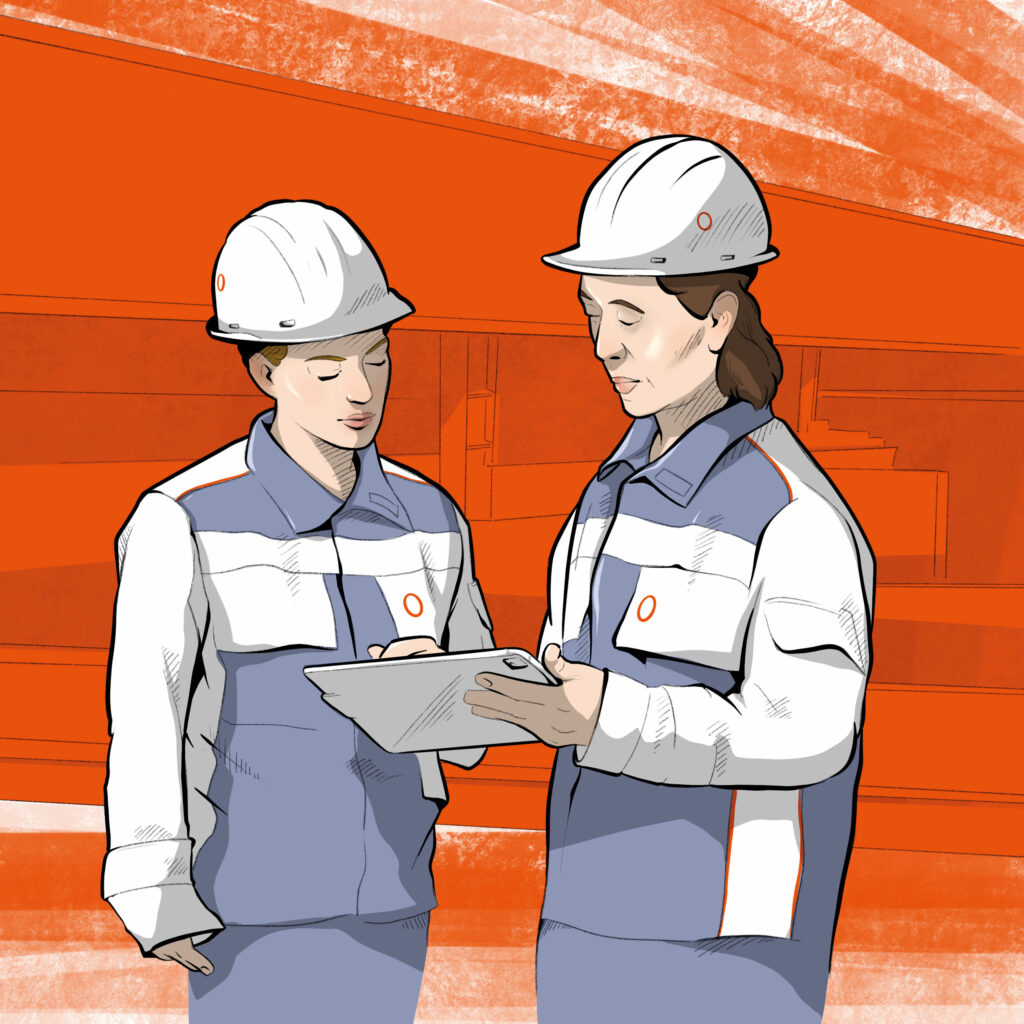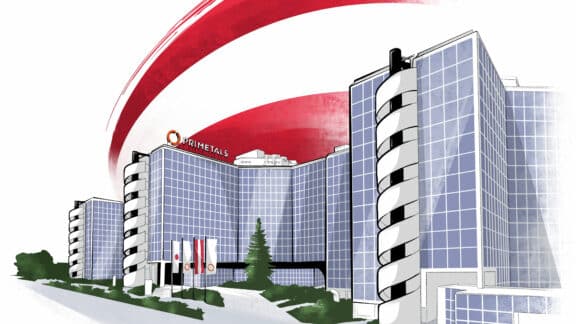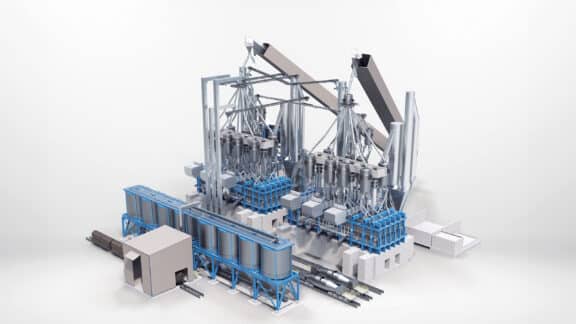Few artificial intelligence solutions have stood in the limelight quite like ChatGPT by developer OpenAI. Entire industries are fearing the disruption the technology may bring. Others look forward to a world in which many arduous, time-consuming processes will be automated or directed to the AI for execution. But how much does ChatGPT know about the metals business? Does it have the insight required to support steel producers in achieving long-term sustainability? We asked the AI to discuss the ten most important factors for producers wanting to become greener. Our series concludes with the topics of decentralized production, human capital, and collaborative efforts.

8. Decentralized Production
“Decentralized production is a concept that has gained traction in the steel industry as an approach to improving resilience, sustainability, and efficiency. This strategy involves the distribution of production across multiple locations rather than relying on a central manufacturing facility. This way, steel producers can mitigate the impact of disruptions such as natural disasters, equipment failures, or labor strikes. Decentralization can also enhance sustainability by reducing transportation emissions and energy consumption. To achieve decentralized production, large steel producers can adopt several strategies. One approach is to establish satellite production facilities near major customers or markets. These facilities can enable tailored production and improved delivery times. Another option is to form partnerships or joint ventures with local manufacturers or suppliers, leveraging local expertise while maintaining global scale. Implementing decentralized production requires significant investment in technology and infrastructure that can facilitate communication, coordination, and quality control across multiple locations. Cloud-based software systems can enable real-time monitoring and data sharing, while analytics and artificial intelligence tools can optimize production and improve quality. Decentralized production presents a valuable opportunity for large steel producers to serve niche or specialized markets.
Steel producers that adopt a decentralized production strategy can differentiate themselves from their competitors, particularly in terms of responsiveness and sustainability. By decentralizing production, steel producers can achieve a more efficient and flexible production system, with reduced supply chain risks and enhanced sustainability. These factors can be particularly appealing to environmentally conscious customers who seek more sustainable products and solutions. There are also challenges associated with decentralized production, such as the need for significant upfront investment, the risk of quality control issues across multiple sites, and the potential for increased complexity in supply chain management. Steel producers need to carefully consider the trade-offs and potential risks when deciding to implement a decentralized production strategy. In spite of these challenges, the potential benefits may outweigh the risks for companies willing to make the investment.”

9. Human Capital
“The steel industry is highly dependent on its workforce. Thus, investing in human capital is essential for long-term sustainability in the industry. This involves creating a diverse and inclusive workplace that attracts and retains top talent, and providing continuous training and development opportunities to improve employee skills and knowledge. One of the challenges facing the steel industry is the aging workforce, with many employees nearing retirement age. This highlights the need for succession planning to ensure that the industry has the right people with the right skills to meet the challenges of the future. The steel industry has traditionally been male-dominated, but this is changing, with more women entering the industry in recent years. However, there is still much work to be done to increase the representation of women, as well as other underrepresented groups, in the industry.
Continuous training and development opportunities are critical for improving employee skills and knowledge, as well as enhancing job satisfaction and motivation. The steel industry is constantly evolving, with new technologies and processes being developed to reduce the environmental impact of steel production. Thus, it is essential for employees to be trained on the latest technologies and processes to stay ahead of the curve. Training programs can also help employees develop new skills and move up the career ladder, which can improve retention rates and reduce turnover.
Investing in human capital also involves promoting a culture of safety and well-being in the workplace. Steel production is a high-risk industry, and safety must be a top priority. This involves providing employees with the necessary training and equipment to work safely, as well as creating a culture that values safety and encourages employees to report safety hazards and near-misses. Another important aspect of investing in human capital is promoting work-life balance. Steel production is often a demanding and stressful job, and promoting work-life balance can help employees manage their workload and avoid burnout. This can include flexible work arrangements, such as telecommuting, as well as providing resources for stress management and mental health support.”
10. Collaborative Efforts
“By collaborating with stakeholders, including suppliers, customers, and local communities, steel producers can gain valuable insights into their operations and identify opportunities for improvement. One example of this kind of collaboration is the World Steel Association’s Climate Action program, which brings together industry stakeholders to address the steel sector’s environmental challenges. Through this program, steel producers can share best practices, develop new technologies, and work towards common goals. Collaborative efforts can also take the form of partnerships between steel producers and other industries or organizations. For example, steel companies can collaborate with renewable energy companies to develop sustainable energy sources for their operations. Additionally, collaborations with research institutions can lead to the development of new technologies for reducing emissions and improving efficiency. Steel producers should also consider opportunities to work even more closely with local communities. This can include initiatives to reduce air and water pollution, improve waste management, and minimize the environmental impact of operations. Benefits of collaborative efforts for steel producers include improved environmental performance, increased efficiency, and reduced costs. By working together with stakeholders, steel producers can identify areas for improvement and develop more effective strategies for reducing emissions and improving sustainability. Collaborative efforts can also help steel companies stay ahead of regulations and consumer preferences, as well as enhance their reputation as responsible corporate citizens.
In addition to these benefits, collaborative efforts can also have broader positive impacts on society and the environment. For example, partnerships between steel companies and renewable energy providers can contribute to the development of a more sustainable energy system overall.
Overall, collaborative efforts are an essential factor in making the steel industry more sustainable. By working together with stakeholders and engaging with local communities, steel producers can identify opportunities for improvement, develop new technologies, and implement more effective strategies for reducing emissions and becoming greener.”
JOIN THE CONVERSATION!
Having read the AI’s ideas on the green future of metals production, what are your thoughts? Are you amazed with the level of knowledge on the steel industry that ChatGPT has already accumulated? Or do you feel that the AI’s answers were a bit on the shallow side? Join the conversation and let us know your opinion by sending an email to metalsmagazine@primetals.com


